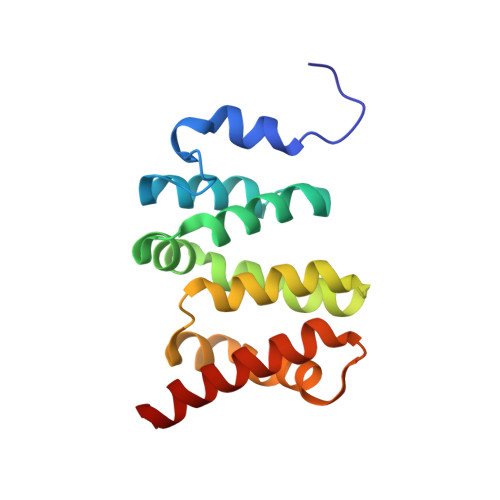The MYC oncoprotein directly interacts with its chromatin cofactor PNUTS to recruit PP1 phosphatase.
Wei, Y., Redel, C., Ahlner, A., Lemak, A., Johansson-Akhe, I., Houliston, S., Kenney, T.M.G., Tamachi, A., Morad, V., Duan, S., Andrews, D.W., Wallner, B., Sunnerhagen, M., Arrowsmith, C.H., Penn, L.Z.(2022) Nucleic Acids Res 50: 3505-3522
- PubMed: 35244724
- DOI: https://doi.org/10.1093/nar/gkac138
- Primary Citation of Related Structures:
6VTI, 7LQT - PubMed Abstract:
Despite MYC dysregulation in most human cancers, strategies to target this potent oncogenic driver remain an urgent unmet need. Recent evidence shows the PP1 phosphatase and its regulatory subunit PNUTS control MYC phosphorylation, chromatin occupancy, and stability, however the molecular basis remains unclear. Here we demonstrate that MYC interacts directly with PNUTS through the MYC homology Box 0 (MB0), a highly conserved region recently shown to be important for MYC oncogenic activity. By NMR we identified a distinct peptide motif within MB0 that interacts with PNUTS residues 1-148, a functional unit, here termed PNUTS amino-terminal domain (PAD). Using NMR spectroscopy we determined the solution structure of PAD, and characterised its MYC-binding patch. Point mutations of residues at the MYC-PNUTS interface significantly weaken their interaction both in vitro and in vivo, leading to elevated MYC phosphorylation. These data demonstrate that the MB0 region of MYC directly interacts with the PAD of PNUTS, which provides new insight into the control mechanisms of MYC as a regulator of gene transcription and a pervasive cancer driver.
Organizational Affiliation:
Princess Margaret Cancer Centre, University Health Network, 101 College St, Toronto, ON M5G 0A3, Canada.














